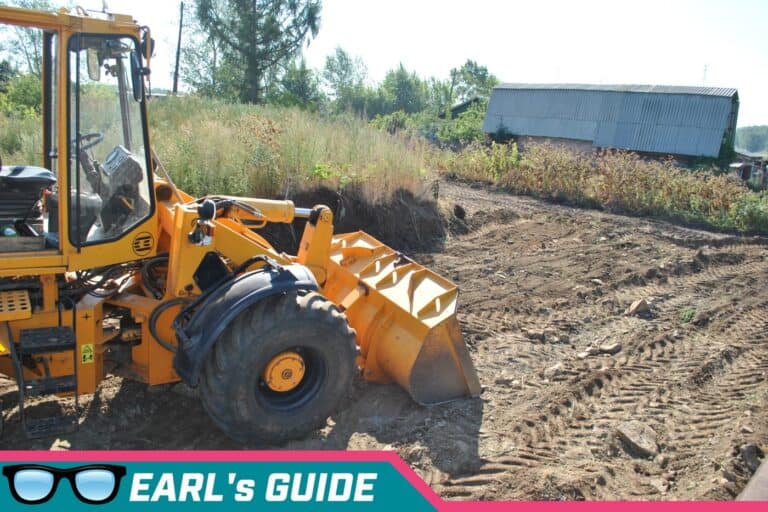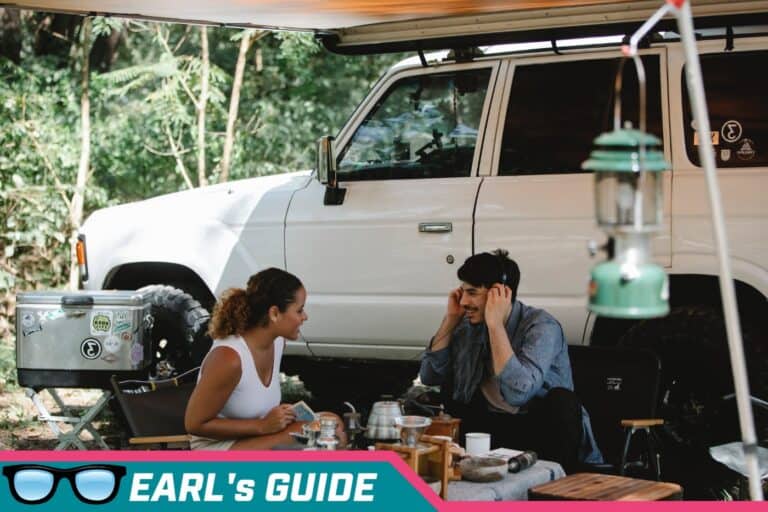How to Find a Workamping Position at an RV Park or State Park
Workamping, the blend of work and camping, has become an increasingly popular choice for many RV enthusiasts, especially those seeking to offset the cost of their travels or those simply wanting a change of pace from the conventional work environment. Typically, workampers exchange labor for a campsite, including utilities, and sometimes even additional wages. If the idea of working in the scenic surroundings of an RV or state park appeals to you, here’s a guide on how to find a workamping position.
1. Understand the Workamping Lifestyle
Before embarking on your workamping journey, it’s essential to understand what the lifestyle entails:
- Duration of Commitment: Most positions require a commitment ranging from a few months to a whole season.
- Types of Jobs: Jobs can vary from front desk operations, maintenance, and groundskeeping to hosting, guiding tours, or even assisting in park-run events.
- Compensation: While many parks offer a free site with utilities in exchange for work, others may also provide an hourly wage.
2. Research and Identify Potential Parks
Start by making a list of areas or states you’d like to workamp in. Factors to consider include:
- Location: Do you prefer coastal areas, mountains, or forests? The location can dictate the kind of jobs available.
- Park Size: A larger RV resort might offer a wider range of positions than a smaller state park.
- Amenities and Perks: Some parks might offer added benefits such as free WiFi, laundry facilities, or store discounts.
3. Use Dedicated Workamping Websites
There are several websites specifically designed to connect workampers with potential employers:
- Workamper News: One of the oldest and most respected sources, offering job listings, advice, and seminars about the workamping lifestyle.
- CoolWorks: Features jobs in great places, often in outdoor and adventure settings.
- Workers On Wheels: Provides numerous listings and resources for aspiring workampers.
4. Network with Fellow RVers
There’s no better source of information than those who’ve been there and done that. Connect with:
- Local RV Clubs or Groups: Attend meetings or events and get insights from experienced workampers.
- Online Forums: Websites like RV.net or iRV2.com have dedicated sections where members discuss workamping opportunities and share experiences.
5. Visit RV Shows and Rallies
Many RV shows and rallies, such as the FMCA conventions, have sessions or booths dedicated to workamping. It’s an excellent way to meet potential employers or get firsthand information.
6. Apply Directly to Parks
If you have specific parks in mind, it’s always a good idea to approach them directly. Most parks have contact information listed online. A direct inquiry shows initiative and can sometimes yield opportunities that aren’t widely advertised.
7. Prepare a Workamper Resume
While a traditional resume focuses on academic and professional achievements, a workamper resume should highlight:
- Relevant Skills: Emphasize any skills pertinent to the job, like experience in maintenance, customer service, or event coordination.
- Previous Workamping Experiences: If you’ve held similar positions before, make sure to list them.
- Availability: Clearly state when you can start and how long you’re willing to commit.
I wrote an article to help you make your workamper resume stand out.
8. Ask the Right Questions During Interviews
Once you secure an interview, be prepared with questions:
- Duties and Expectations: Get a clear understanding of your roles and responsibilities.
- Work Schedule: How many hours are expected daily or weekly? Are there specific days off?
- Compensation Details: Apart from the free site, are there additional wages, and how are they calculated?
- Park Rules and Guidelines: As both an employee and a resident, it’s crucial to understand the park’s rules.
9. Look into State Park Volunteer Programs
Many state parks have volunteer programs where you can work in exchange for a campsite. While these positions might not always offer a wage, they can be incredibly rewarding and provide unique experiences. States often have their own dedicated volunteer websites or listings on their official state park websites.
10. Consider Workamping Beyond Just RV and State Parks
Expand your search beyond traditional RV and state parks. Many farms, wildlife reserves, and even festivals offer workamping opportunities.
Workamping: A Convergence of Work and Exploration
The concept of workamping combines two seemingly opposing facets of life: work and camping. Yet, as many have discovered, it’s a synergy that offers a unique blend of financial, personal, and lifestyle benefits. But what exactly is workamping, and why is it gaining traction among diverse groups of people? Let’s delve in.
What is Workamping?
Workamping, at its core, involves working while living in an RV or similar camping setup. It’s a portmanteau of “work” and “camping.” While the concept might initially conjure images of camp-host roles at national or state parks, workamping jobs can be much more varied. Positions might include maintenance personnel, retail clerks, tour guides, or even agricultural roles during harvest seasons.
Why is Workamping Attractive?
- Sense of Adventure: Workamping facilitates a nomadic lifestyle, enabling individuals to explore various parts of a country — or even different countries — without abandoning work. It offers a blend of stability and adventure, giving one the ability to enjoy new locations regularly.
- Reduced Living Expenses: In many workamping roles, especially those associated with campsites or parks, the employer provides free or discounted RV sites. This arrangement can significantly reduce the cost of living. When utilities, site amenities, and sometimes even additional wages are factored in, workamping can offer tangible financial benefits.
- Flexibility: Unlike traditional 9-to-5 jobs, workamping often comes with flexible hours. This flexibility allows individuals to tailor their work schedules around personal preferences, such as exploring the locale, pursuing hobbies, or simply relaxing.
- Community: RV parks and campgrounds often foster a sense of community. Workampers can engage with like-minded individuals, creating connections and friendships that last a lifetime. This ever-changing community ensures fresh interactions and stories, keeping the social aspect of life vibrant.
- Simplicity and Minimalism: Workamping complements a minimalist lifestyle. Living in an RV naturally encourages fewer possessions and offers a simpler, less cluttered way of life. Many find this downsizing both liberating and conducive to personal well-being.
- Opportunity to Acquire New Skills: The variety of jobs available to workampers means there’s always something new to learn. Whether it’s gaining maintenance skills, understanding the workings of a particular industry, or simply improving interpersonal communication in a customer-facing role, workamping can be both a job and an education.
- Environmental Connection: For those passionate about nature, workamping provides a unique opportunity to live closer to the environment. The immediate access to nature’s wonders, from forests and lakes to mountains and deserts, can be deeply fulfilling.
- Perfect for Transition Phases: Whether someone is transitioning from full-time employment to retirement, taking a gap year, or just seeking a sabbatical from routine, workamping offers an ideal bridge. It provides both income and a change of pace, making transitions smoother and more enjoyable.
- Remote Work Compatibility: With the rise of remote work, many people can now perform their regular jobs from anywhere with an internet connection. For such individuals, workamping can be a way to merge the best of both worlds: maintaining their current job while indulging the wanderlust.
Workamping is more than just a job; it’s a lifestyle choice. It caters to those who yearn for freedom, exploration, and novelty, all while ensuring financial stability. As the world becomes more interconnected and flexible work arrangements more commonplace, workamping is set to become an even more attractive prospect for individuals across various life stages and professions.
Workamper Positions: Understanding the Varieties of Compensation
The allure of the open road, combined with the stability of a steady job, has led many to the world of workamping. However, one size doesn’t fit all when it comes to compensation in workamper positions. There are varying models of remuneration, each with its benefits and considerations. Let’s explore the differences among the most common compensation types for workampers.
1. Trade for Spot
- What It Is: In this arrangement, the workamper provides services to the RV park, campground, or employer in exchange for a free or discounted campsite. No monetary compensation is exchanged for the work performed.
- Benefits:
- Simplicity: There’s no financial transaction involved, making it straightforward for both parties.
- Consistent Costs: Workampers know their “rent” is covered, bringing peace of mind.
- Considerations:
- Value Perception: It’s important to ensure that the work required matches the value of the site provided. A full-hookup site with ample amenities in a prime location will have higher perceived value than a basic site in a less popular spot.
- Potential Overwork: Without clear boundaries, workampers might end up working more hours than originally intended.
2. Minimal Hour Requirement with Additional Paid Hours
- What It Is: Here, workampers are expected to work a set number of hours (minimal requirement) purely in exchange for their campsite. Any hours worked beyond this threshold are then paid at an agreed-upon hourly rate.
- Benefits:
- Flexibility: This model offers a balance of guaranteed site occupancy and potential monetary income.
- Incentive to Work More: Knowing there’s extra income potential can motivate workampers to take on additional shifts or responsibilities.
- Considerations:
- Monitoring Hours: Both employer and workamper need to track hours diligently to ensure correct compensation.
- Potential for Misunderstandings: Clear communication is crucial. Both parties must understand and agree upon the threshold for paid work and the rate of pay.
3. Paid Position with Reduced Fee for the Spot
- What It Is: Workampers are paid for all the hours they work, irrespective of a minimum threshold. In addition, they’re charged a fee for their campsite, albeit at a reduced rate compared to regular guests.
- Benefits:
- Clear Compensation: Workampers know they’re earning for every hour they put in.
- Reduced Living Costs: The discounted site rate offers savings over standard campground fees.
- Considerations:
- Cash Flow: Workampers need to manage their earnings to cover the site fee. Depending on the payment schedule, they might receive their wage before or after the site fee is deducted.
- Potential for Higher Out-of-Pocket Costs: If work hours are limited or inconsistent, workampers might find themselves earning less than the site fee.
Choosing the right compensation model depends on individual preferences, needs, and circumstances. Some might prioritize the stability of a free site; others might seek the potential of extra income. For park owners and employers, understanding these nuances is crucial in crafting attractive workamper positions. And for workampers, clarity on these models helps in finding roles that align best with their financial and lifestyle goals.
The Workamper Resume: Why Visuals Make a Difference
In the modern age, job hunting is more than just listing qualifications on paper; it’s about presenting oneself wholly, especially in unique fields like workamping. Just as digital portfolios have become vital for designers, photographers, and many freelancers, a comprehensive workamper resume—complete with photos of both the applicant and their RV—can significantly impact an application. Here’s a dive into why a visually-inclusive workamper resume stands out.
1. A Picture is Worth a Thousand Words:
Photos can provide immediate insights that words often cannot. Including a picture:
- Personalizes Your Application: It gives employers a face to associate with the name, making your application more memorable.
- Shows Professionalism: A well-taken photo can convey seriousness about the role and demonstrate that you understand the importance of first impressions.
2. Demonstrating RV Pride and Maintenance:
The condition of your RV can speak volumes about your character and work ethic.
- Shows Responsibility: An RV in good condition suggests that the owner is responsible and cares about maintenance — qualities employers look for.
- Gives Assurance: Parks and employers will be more inclined to offer a spot to someone they believe will respect and take care of the property. A well-maintained RV can offer this assurance.
3. Showcasing Compatibility:
Not all RV sites or roles are suitable for every RV type. By providing a photo:
- Facilitates Better Matching: Employers can immediately gauge if your RV will fit within their site or if it’s suitable for the role, especially if the job involves mobile tasks or specific site constraints.
- Reduces Potential Misunderstandings: A photo ensures there are no surprises upon arrival, ensuring a smooth start to the workamping role.
4. Building Trust and Transparency:
In workamping, where roles are often seasonal and remote, building trust is paramount.
- Authenticity: A resume with photos signals honesty and transparency, critical traits in remote work environments.
- Opens Lines of Communication: By presenting a full picture of yourself and your RV, you open a channel for employers to discuss any specific needs or adjustments upfront.
5. Making Your Application Stand Out:
In a competitive environment:
- Unique Selling Proposition (USP): Photos can act as a USP, making your application distinct and memorable amidst a pile of text-heavy resumes.
- Engagement: Visual elements naturally draw more attention. An employer is more likely to engage with and remember a visually appealing application.
Tips for Including Photos in Your Workamper Resume:
- Quality Matters: Ensure photos are clear, well-lit, and high-resolution.
- Stay Professional: While it’s good to show personality, remember to keep photos professional. Avoid overly casual or inappropriate images.
- Update Regularly: Just as you’d update your skills or work experiences, regularly update your photos to reflect any significant changes to your RV or personal appearance.
While qualifications, skills, and experiences are undeniably vital in a workamper application, the addition of relevant photos can elevate a resume. It provides a fuller picture (quite literally) of the applicant, making the application process smoother, more transparent, and ultimately more successful for both parties. As the adage goes, “Show, don’t just tell.”
Conclusion
Workamping can be a fantastic way to immerse yourself in the beauty of the great outdoors while also being productive. The key is thorough research, leveraging both online and offline resources, and being proactive in your approach. With patience and determination, you can find the perfect workamping position that offers both a fulfilling work experience and an unforgettable adventure.

Robert Earl
Robert EarlRobert has 20+ years of experience as a Real Estate Agent, Coach, Digital Marketer & Author, coupled with a unique expertise in professional RV Park Management. His time as an RV Park Manager has been marked by a strong ability to increase campground occupancy and revenue through strategic management and targeted marketing efforts. His dual career in online marketing and RV Park Management provides a rich perspective on success in diverse fields. Robert Earl is passionate about teaching and empowering others to pursue their dreams and create sustainable income. Whether through a career in real estate, affiliate marketing, niche blogging, or transforming campgrounds into thriving communities, his proven strategies and techniques have helped numerous individuals and businesses succeed. Based on his years of experience and knowledge in the online marketing industry, along with his hands-on management in the RV Park sector, he has crafted a unique and effective approach to personal and professional growth. In addition to his business pursuits, Robert is also a CrossFit Online Level 1 Trainer (CF-OL1) and enjoys fitness activities, including Rucking workouts while traveling the country. His multifaceted career showcases his dedication to growth, innovation, and the pursuit of excellence in various domains.






